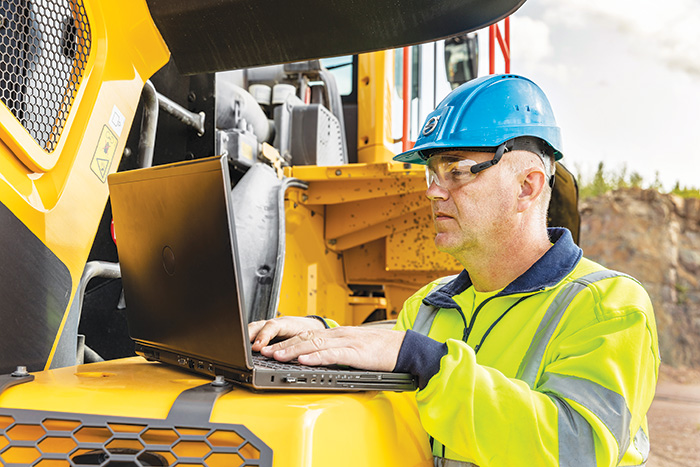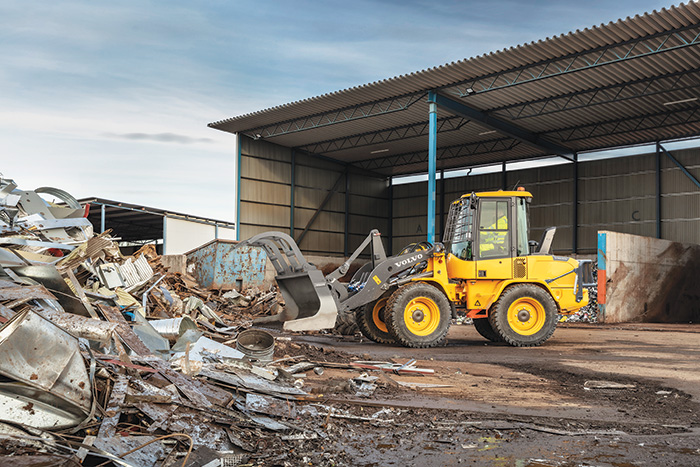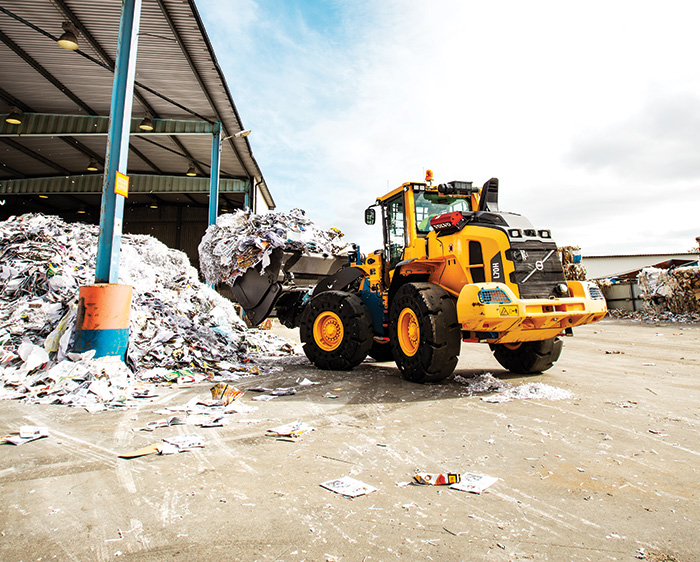Telematics means much more than preventing unnecessary downtime and enhancing operator performance. It is a way to dial in those total cost of ownership numbers and find opportunities for savings.
By James Bretz
These days, waste and recycling equipment is typically manufactured with features that help you save time and money through deliberate machine design such as guarding, Z-bar linkage, and an intuitive, operator-friendly cab setup. However, did you know that one of the best ways to cut costs even further is by using advanced telematics to monitor machine health and use and pinpoint opportunities for saving? This, in turn, can help you lower a machine’s total cost of ownership (TCO).
Calculating a machine’s TCO can be a complicated equation, but if you have access to the right tools—especially telematics data and software—the solution is easily within reach. The standard formula for calculating total cost of ownership is the cost of owning and operating a machine in dollars per hour, divided by what it produces in tons per hour. This will give you a cost per ton number.
There are several ways telematics can help with all three parts of this equation: owning costs, operating costs, and productivity. Let’s take a closer look.

Owning
Owning costs include the purchase price, interest, insurance, tax, residual value, and depreciation. The one telematics can help customers control most is depreciation. Let’s say you have two of the exact same wheel loaders doing the same amount of work in a recycling facility. Loader A runs with 50 percent idle time and Loader B is idling at 33 percent. As a result, Loader A racks up about 2,000 hours each year, whereas Loader B runs about 1,500. While that may not sound like a big difference, it adds up faster than you think.
After five years, Loader A will have accumulated 10,000 hours, with a true working time of 5,000 hours due to higher idling times. Loader B will have only 7,500 hours put on it to reach the same 5,000 hours of true working time. The same work rate was achieved over the same period, but the difference of 2,500 lifetime hours on Loader A can cut thousands of dollars from its resale value, just because of idle time. Advanced telematics services can help owners and operators monitor and adjust idle times, saving hundreds of unnecessary hours and protecting the machine’s value.

Operating
Operating costs include fuel consumption, wear parts, preventive maintenance, and repairs. Fuel is a major expense for every fleet, and if monthly telematics reports can help you identify opportunities to use less fuel, you are ahead of the game.
Using telematics can also greatly reduce unplanned maintenance and repair costs by catching potential problems before they occur and more quickly diagnosing and solving bigger issues. It can help you and your dealer stay on top of scheduled maintenance with reminders and alerts as well. We all know how costly downtime can be.
Reducing operator misuse is another big benefit of the reports that typically come from telematics. Five of the most common mistakes an advanced telematics program helps catch are hot turbo shutdowns and high-speed shifts on wheel loaders, excessive service brake use and overuse of differential lock engagement on haulers, and misuse of excavator work modes.
Identifying these and other errors, then training operators to avoid them, can save you big bucks on operating and maintenance costs, thereby reducing a machine’s TCO.

Productivity
Finally—to state the obvious—maximizing production is what every owner and operator strives to do. Using telematics reports to identify trends and issues will allow a site or fleet manager to optimize the way their staff and equipment are put to work.
If an operator is provided with the information to correct those common mistakes, they will become more efficient and productive—and maybe even a happier employee. Some customers view telematics and other productivity-related software as a major part of their training and retention efforts.
Doing the Math
You have probably tried to evaluate TCO in one way or another, and if you do not have many data points to work with, it can feel like a guessing game. That is where a structured telematics program with multiple data points comes in extremely handy.
As this data helps your crew progress and you continue to measure TCO, you will be able to better identify the best machine, warranty timeframe, maintenance procedures, operator training, machine disposal process and so on. This makes for a better purchasing process and, ultimately, an easier day’s work.
Telematics data and software support not only gives a more accurate TCO calculation, but also helps you know how much control you have over that number. Measuring and adjusting things like fuel usage and machine use helps maximize efficiencies and decrease TCO.

Images courtesy of Volvo CE.
On top of the savings you can generate by responding to the data trends, you may also be able to save on insurance. More and more insurance providers are using telematics data to help identify the cause of accidents, confirm that equipment is being used safely, and even locate and recover stolen machines. I suggest talking to your provider to understand whether using telematics programs can lower your premiums.
Simply put, telematics means much more than preventing unnecessary downtime and enhancing operator performance. It is a way to dial in those TCO numbers and find opportunities for savings. While there may be an investment upfront to get up and
running with a great telematics program, I think the math here goes to show that “worthwhile” is putting it mildly. | WA
James Bretz is Territory Manager, Connectivity Services for Volvo Construction Equipment. He is responsible for dealer and key account support of connectivity services including ActiveCare Direct, Volvo’s industry-leading uptime service powered by telematics data. James is incredibly passionate about his responsibilities and thinking as they relate to customer satisfaction. He spent time as a Volvo dealer service manager before moving into Volvo CE Connectivity Services positions. James also has experience in both public and private sector fleet management, construction equipment service management, and fleet services administration. His can be reached at [email protected].
